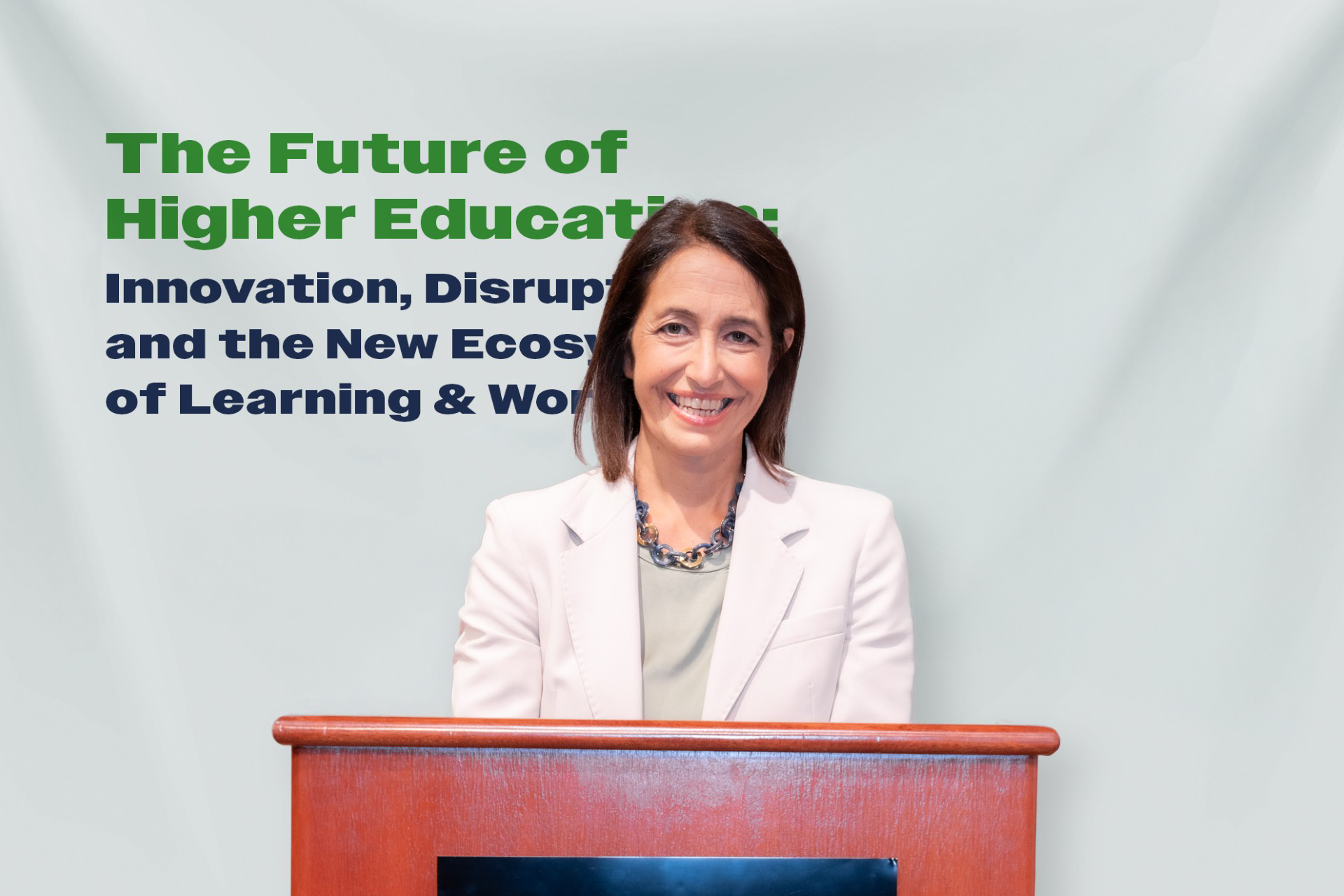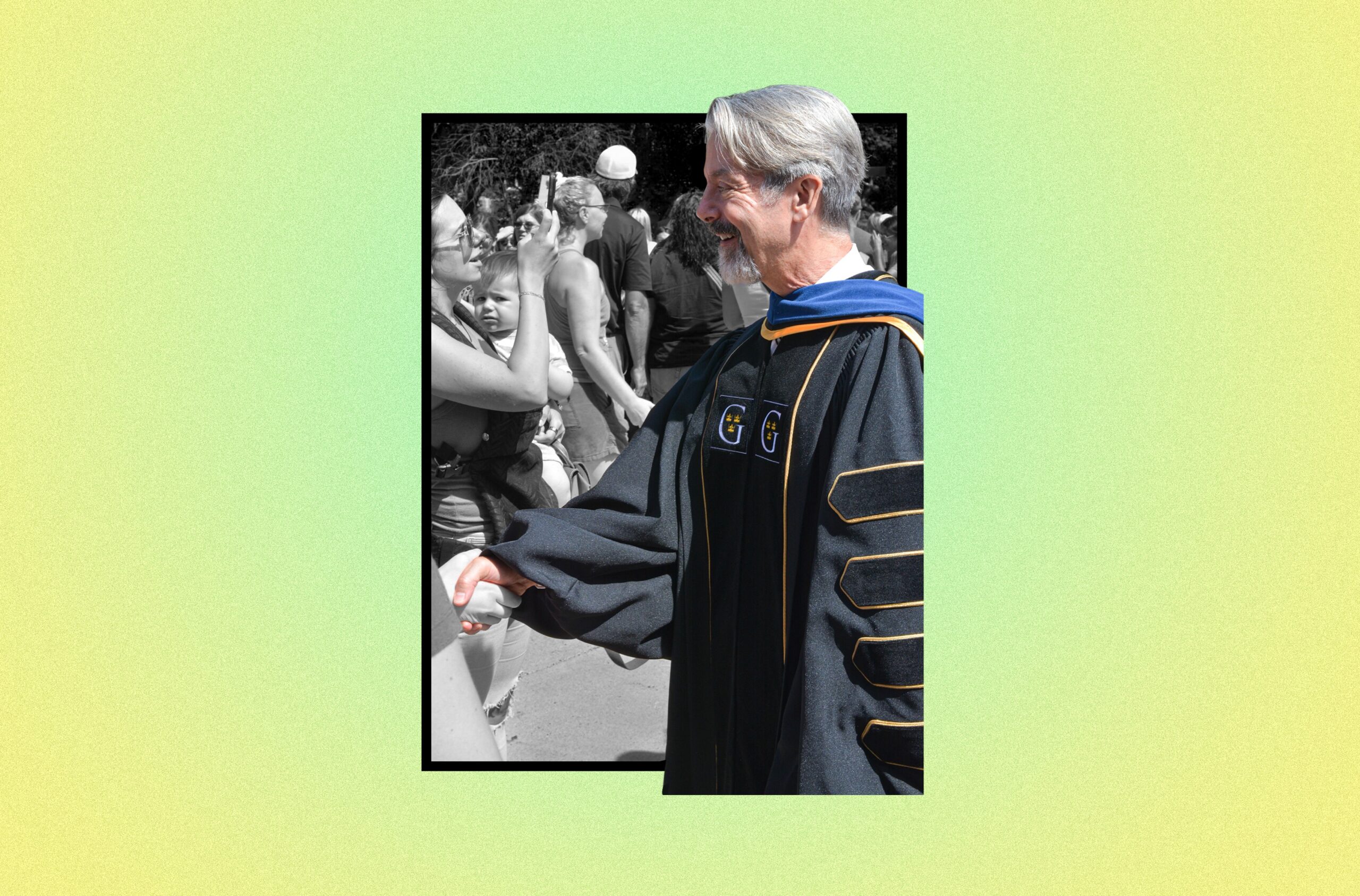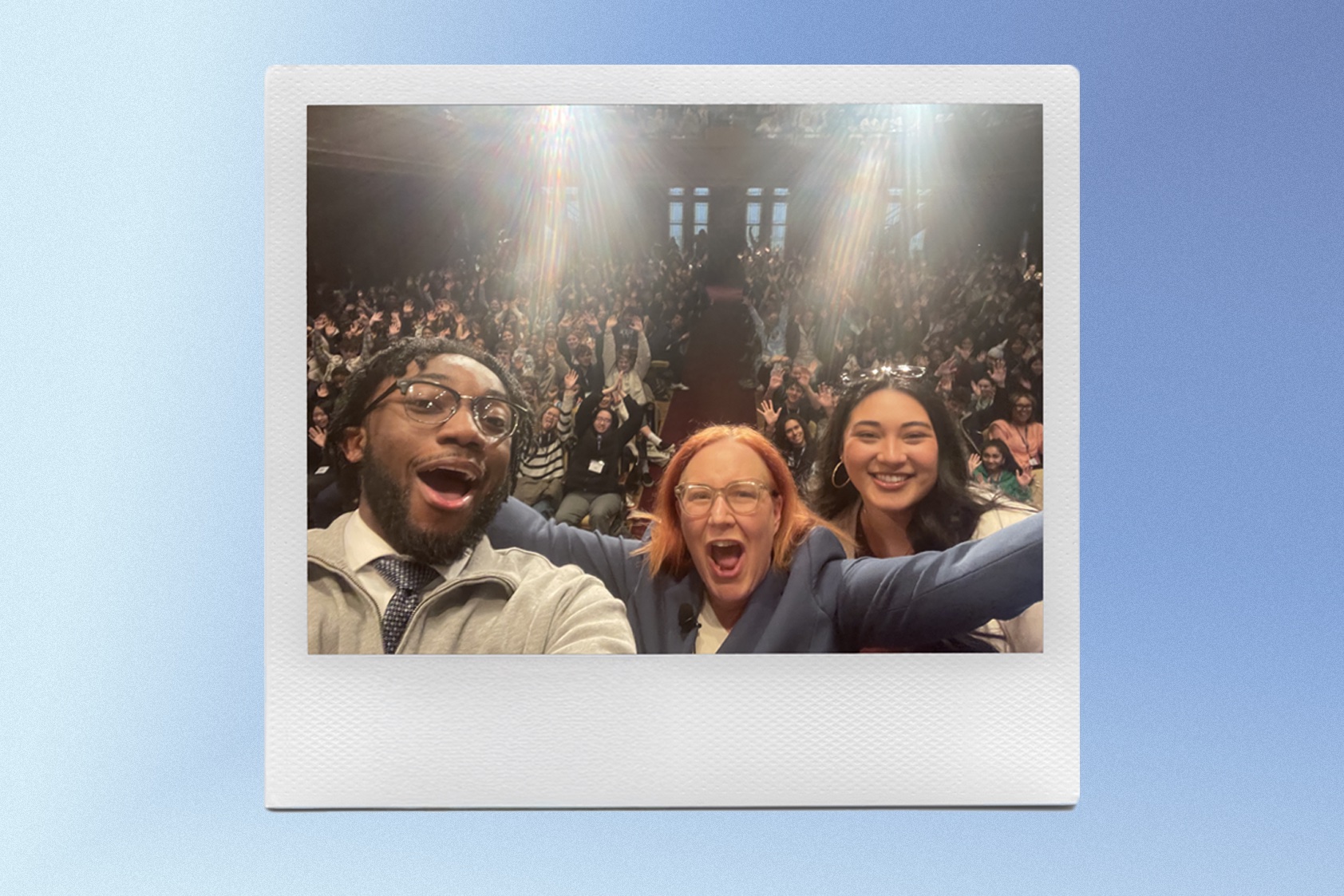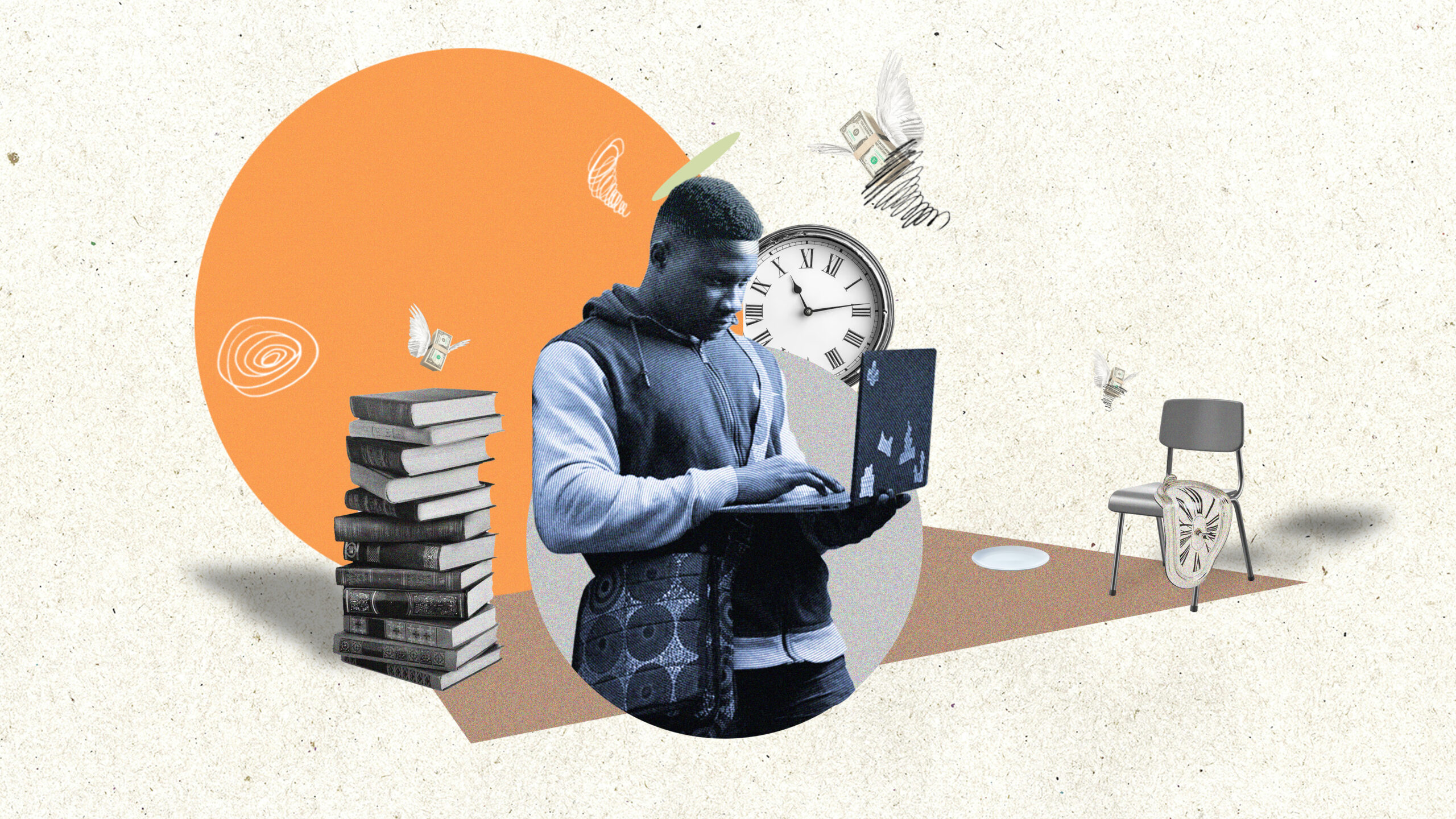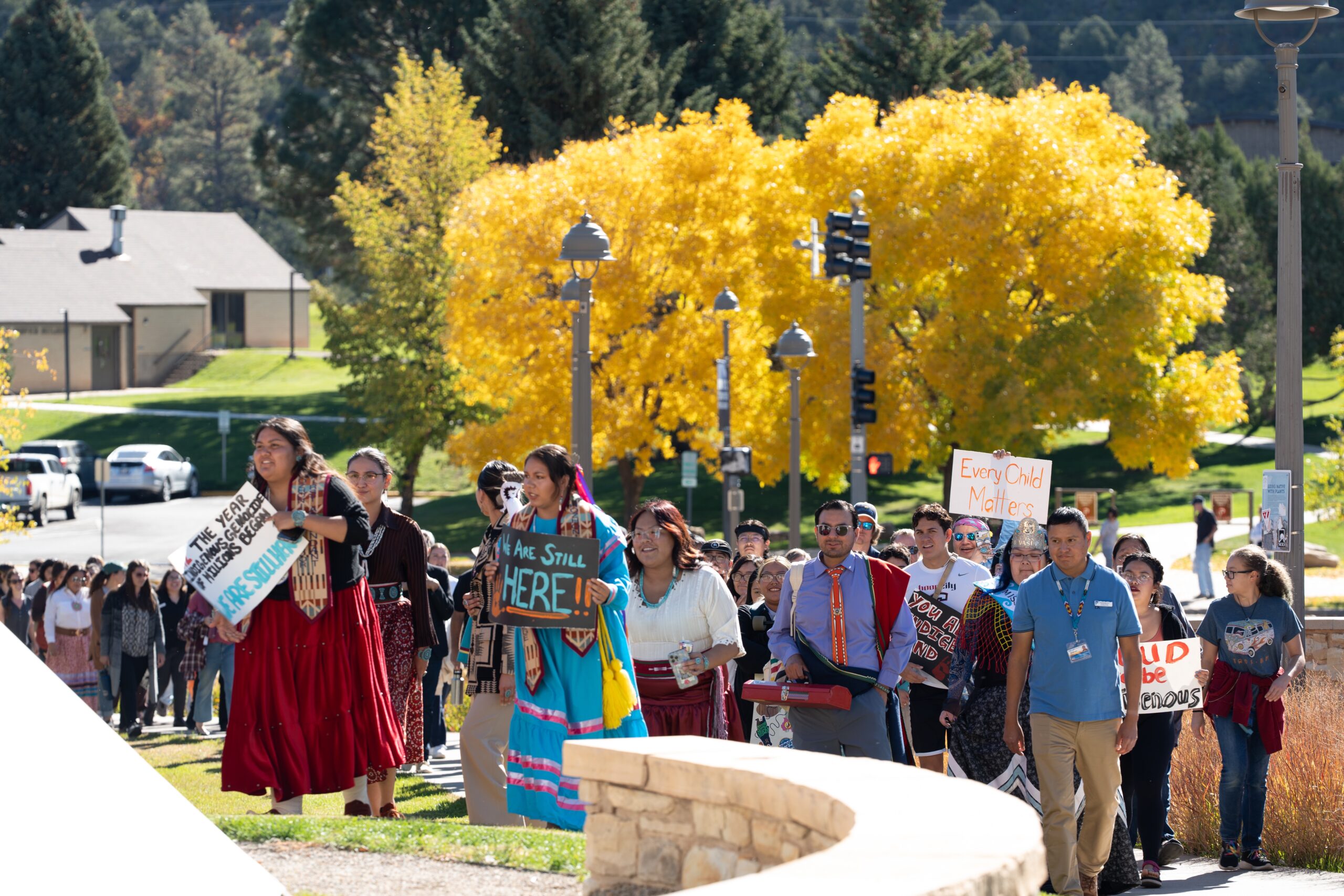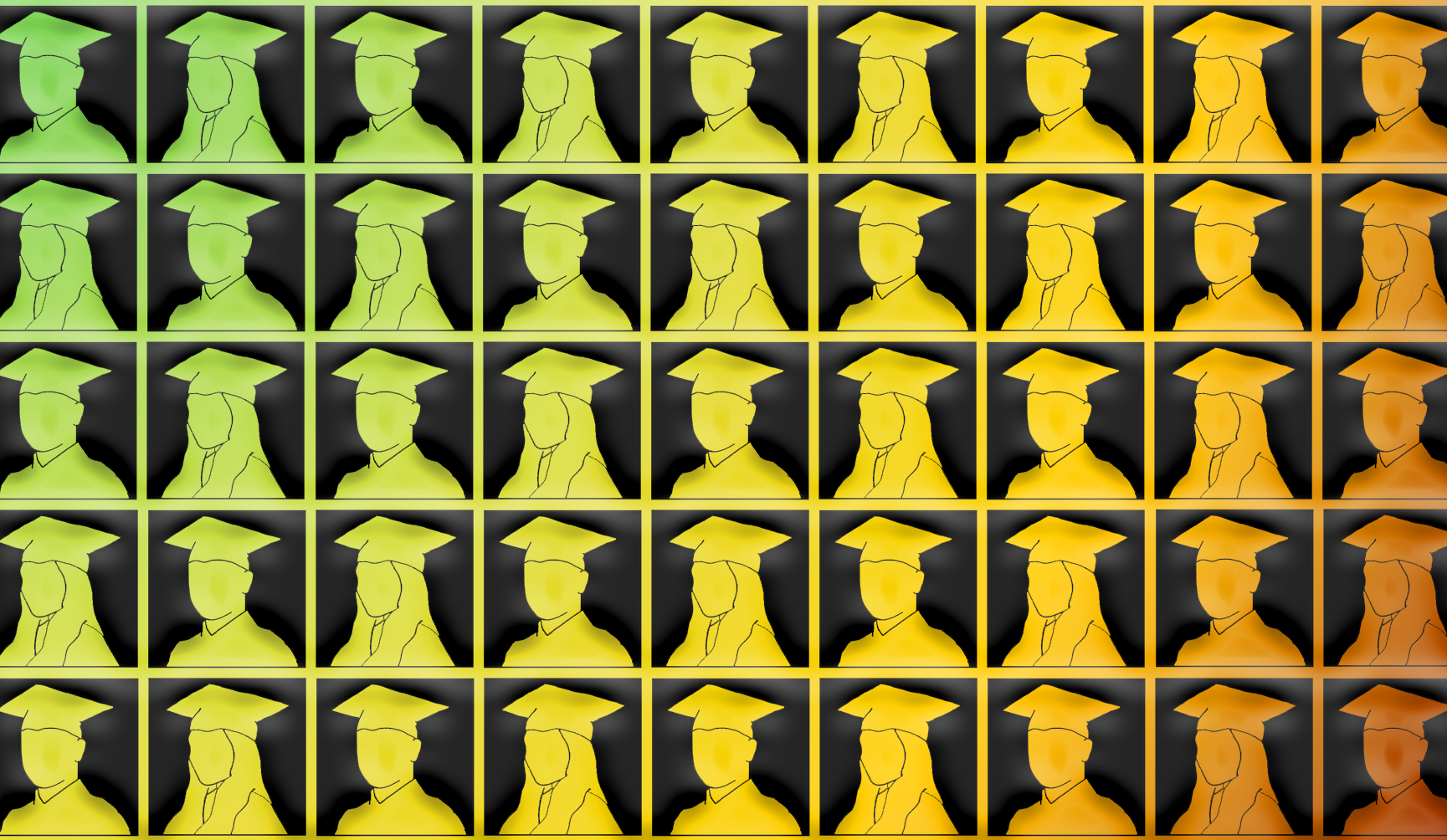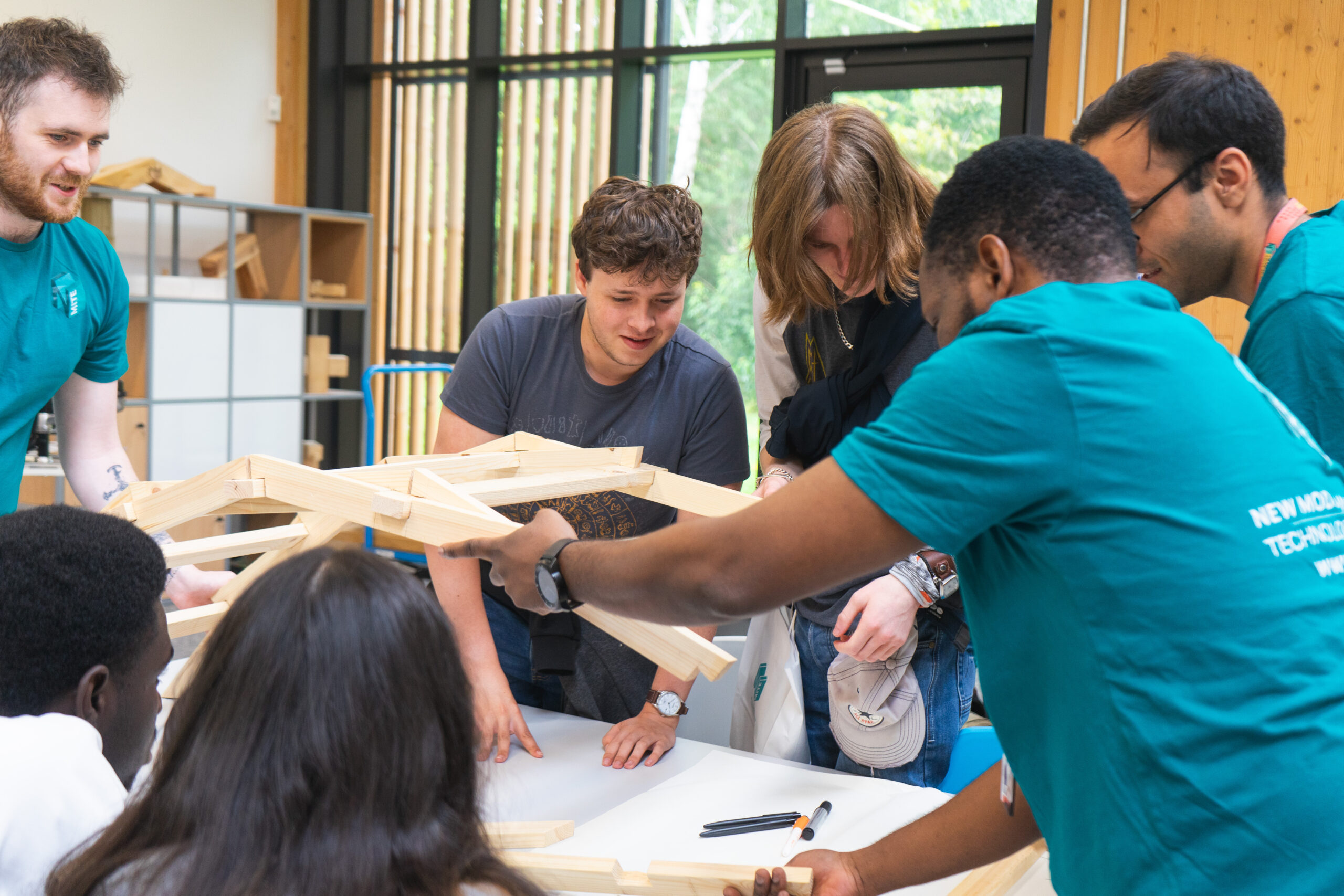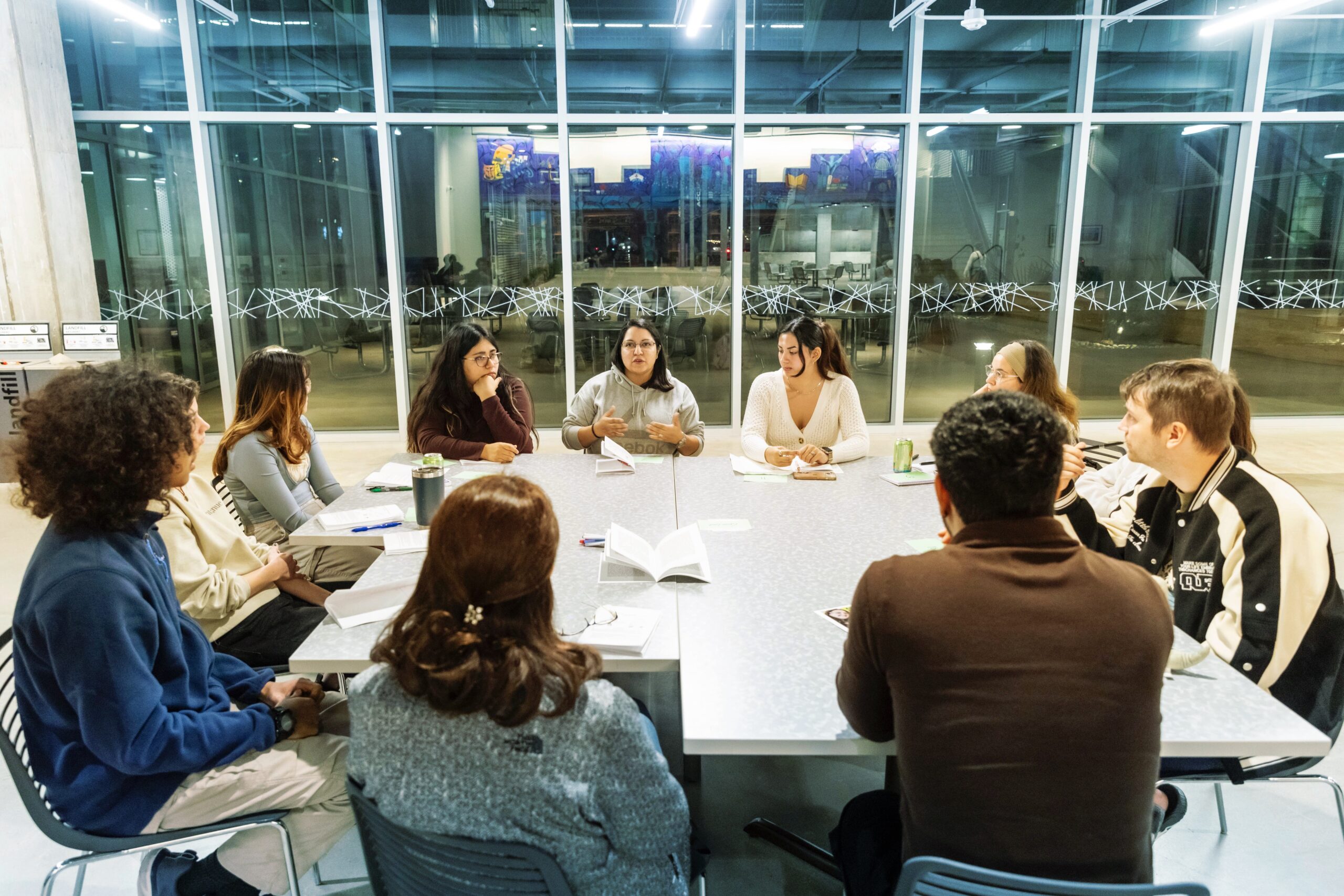Despite her long career in academia, Hilary Link is a bit of an anomaly in higher education. Since becoming president of Drew University in 2023, she has been working hard to embrace change by seeking advice from the outside world.
At a time when many in the sector are battening down the hatches, Link is throwing the doors wide open, viewing this challenging time as a watershed moment for higher ed. In November, Link will continue her Presidential Innovation Series, for which she invites leaders at the forefront of innovation and disruption in their industries to lead conversations that will help steer the future of higher education.
Link has instituted her own major changes at Drew, a small school in Madison, N.J. with an iconic, leafy green campus and devotion to the liberal arts. Recruited to shore up the institution’s financial position, Link has worked with the Drew community to reimagine its pedagogy to better accommodate industry’s demand for job-ready graduates. At the same time, she emphasizes what should not change, like the ability of the liberal arts to help develop the human skills needed to navigate a complex world.
In this conversation with LearningWell, President Link shares what she is learning and how she is going about crafting a “dream future” for Drew — one in which, she said, “everyone can be 100 percent themselves.”
LW: You are both a president and a thought leader in higher education. What motivated you to start the Presidential Innovation Series and your upcoming convening “The Future of Higher Education”?
HL: As a scholar of Renaissance Italian Literature, I was trained to analyze texts, see patterns, employ words and visuals — as a window into other cultures and societies. I have always loved the meta process of stepping back from the text or artwork in which you are immersed to ask, “What is really going on here? What does this work tell us about the cultural, linguistic, artistic, religious, political context in which it was produced?”
My scholarly work focuses specifically on theories of artificial perspective, so I embrace the concept of shifting where one stands to better understand the “big picture.” I see the convergence of being a president and being a thought leader in the higher education sector in similar ways. I have now been president at two institutions and dean of another, and while that work is all consuming, I always push myself to step back and puzzle over the “bigger picture.” How can what I am seeing at Drew University translate across the industry? What does my reading and careful analysis of this institution — like with a text or artwork — tell us about higher education in general and also this moment in our country, our world, our society? The fun for me of planning, crafting, and hosting the Innovation Series or speaking at a public convening is the chance to step back from my day-to-day work about Drew and learn from experts both inside and outside of higher ed — to help me and others see “the big picture.”
LW: In the series, you engage partners outside of higher education. What have you learned from that, both for higher education and for Drew University specifically?
HL: I have always been an interdisciplinary scholar, thinker, and do-er. My dissertation was on ekphrasis — written descriptions of visual works of art — which is a true convergence of art and literature. I have always felt that I saw new and different things in texts because I saw them through a visual lens, and vice versa. Similarly, as I have been on an “innovation journey” for Drew over the past 18 months, I have learned so much from innovators and disrupters in fields related to education but also completely separate.
Often, the “aha” moments come from the concept of “far transfer” that David Epstein talks about in “Range,” one of my favorite books. I see how someone has evolved or transformed their sector, and it makes me see a higher ed-related problem in new ways; it makes me get creative about how we might do something similar in a very different context. The panelists at our November convening are just a sample of some of the fascinating people I have had the opportunity to learn from and be inspired by, and I am excited for other higher ed leaders — and really anyone interested — to learn from them and bring new ideas or ways of thinking back to their campuses or fields.
LW: You are an advocate for new models for liberal arts education. What needs to change? What changes have you made at Drew in this regard?
HL: Since arriving at Drew, I feel like I have been on a journey to understand where the rapid changes in our world are pushing higher ed, and quickly. I started by having deep conversations with anyone who would speak to me — innovators, entrepreneurs, investors, educators — and then crafted a white paper of my dream future for an institution.
But then I put that aside because I knew this couldn’t be driven only by what I thought. Universities are complex organisms, and if we had any chance of evolving, these ideas had to bubble up more organically. So I brought in a brilliant scholar, Dr. Michelle Weise, who spent a year leading some of our most innovative faculty and staff on their own discovery journey. Michelle exposed them to many different models for education, introduced them to people thinking in very different ways about “K-Gray” education, and pushed them to iterate and ideate in really liberating ways.
At the end of last year, we hosted a design-thinking charrette for about 40 campus members, and everyone agreed that any new direction for Drew needed to focus on the following human skills or qualities that we already value and prioritize: resilience, commitment to a common good, complex problem solving, and creativity and curiosity.
Three future-oriented visions emerged for higher education, and groups of faculty and staff spent the past summer designing around those four values to arrive at possible prototypes to present to the community. We encouraged them to think big and challenge existing systems, while focusing on specific challenges Drew needs to solve. It was up to them to define those challenges. While the groups landed in very different places, their prototypes actually gravitated around the same critical features, which was a surprise: student-enabled, personalized/individualized learning; intentional, structured mentoring; applied learning; and accessible, lifelong learning based in problem-based/experiential frameworks. While we already do these things in small ways, the groups were telling us that this is where we need to go big. The coolest part? All of the prototypes in certain ways overlapped strongly with my original “white paper” vision, which further convinced me we are on to something.
The challenge now is finding the space where we can prototype these big, system-changing ideas while protecting the excellent learning experience our university has long provided and will continue to provide for current, traditional students. One idea is to create an incubation hub at Drew where we can play with the most compelling concepts, allowing a small group of students to collaborate with us in shaping a new educational pathway that includes all four critical features from the work of our staff and faculty. This approach can allow us to rapidly learn and find the clarity we need to move forward in the accelerating changes around us. This can of course be tricky. We know we have to move fast, but higher education’s DNA is to move only after deep, comprehensive thinking on matters; it’s how we have been trained as scholars.
I also think it is important to remember that institutions like Drew and higher ed in general do plenty of wonderful, transformative, and life-changing work already, and we see its effect in our current students. So I want to emphasize not just what needs to change but also what needs not to change about Drew and similar institutions: Even as liberal arts colleges might shift from disciplinary majors to more thematically organized knowledge focusing on the problems facing our world, the benefits of a liberal arts approach are amplified, not reduced. The broad interdisciplinarity that develops individuals who can think for themselves, face the uncertain and unknown, and contribute meaningfully to local communities and society at large remains. We’re essentially remixing our strengths for a new audience who are already arriving with different interests and needs.
LW: There’s strong evidence showing that how someone experiences college affects their wellbeing long after they graduate, particularly if they have had mentors and hands-on learning. Do you take that into account in thinking about policies on campus?
HL: I love that you asked that question! In fact, as we have been leaning into redefining the liberal arts for the future in ways that incorporate and employ technology and A.I., we have doubled down on those two concepts: the “human in the loop” — or even better, “at the helm” — or the need for strong mentoring in a new educational model; and the need to interweave applied learning, inquiry-based curriculum, and problem-based approaches with content acquisition. These are things that technology cannot do for us, yet, and these are the aspects that I believe must drive education forward. Those of us in higher ed and those of us who parent young people know all too well the challenges in mental health, isolation, lack of resilience, and need for community young people present with today.
At Drew, we are trying to re-imagine higher education in ways that make it not just financially sustainable but that give young people the tools to engage with big global challenges, to learn through applying their knowledge, to have more say in what, when, and how they learn, and to give them a sense of human connection and relationship that they crave. We of course do many of these things already, but not systematically and not sustainably. We are pushing ourselves to be more intentional here — to shift and evolve so that we give students not just the tools to be well throughout their lives but also a desire to keep coming back to us in meaningful ways as they grow and evolve.
LW: Do you see this as a seminal moment for higher education? Given the attack on higher ed, do you think the sector can move out of its defensive position and into a position of strength?
HL: I absolutely see this as seminal moment and a moment when most institutions have no choice but to lean hard and fast into innovation: different ways of teaching, less traditional definitions of a “student,” new modes of delivery and crediting experiences and applied learning, and more flexible ways of creating a sense of community. As the author and Drew Honorary Degree recipient David Epstein writes in his forthcoming book, “Inside the Box: How Constraints Make Us Better,” institutions that embrace this moment of scarcity, overreach, and challenge to be creative and resilient and that reinvent themselves for a future that is already here, will thrive.
While it is easy to fret and feel defensive and “batten down the hatches” while we hope for and wait for things to change or improve, I see this as a watershed moment.
While it is easy to fret and feel defensive and “batten down the hatches” while we hope for and wait for things to change or improve, I see this as a watershed moment. If we can come out of these challenges having heard and thoughtfully tried to address some of the public critique about higher ed and particularly the liberal arts — too politicized, too costly, broken, offering no value for workforce preparation — we can envision entirely new prototypes and models for the sector that are accessible, affordable, more relevant to all, and better suited to equipping future generations to control what they learn and when, in order to apply what they learn to solve big global issues. I have been beating this drum for more than a decade, but I think the sector is now being squeezed and pushed so much that real and lasting change can happen.
LW: What do you love about Drew?
HL: From the moment I stepped on campus as president, I fell in love with the tranquil and beautiful campus, the open, thoughtful, unpretentious and welcoming students, the inspiring faculty, and a community that cares deeply about each other and the institution. I love that Drew is a little quirky and that it holds space for everyone — no matter who you are. I love that you can be 100 percent yourself here. And I love that at a moment of deep crisis for the higher ed sector as a whole, this community has been open to change, willing to lean into where the future is leading us, and incredibly thoughtful about what we do well, as well as where we can be more agile, focused, and open to new ideas.
